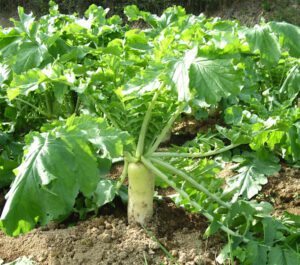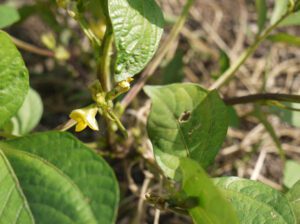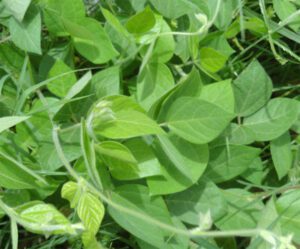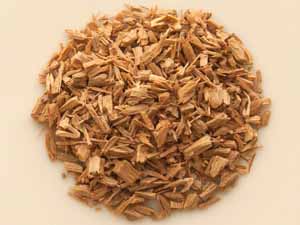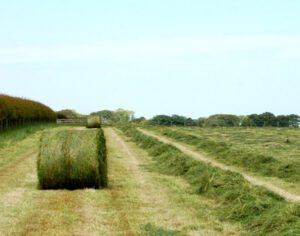Are you interested in starting commercial celery farming business? If yes, then you are in the right place. Here we are trying to describe more information about starting and operating a successful celery farming business. But before starting, do you know what is celery? Celery is a leafy vegetable which is grown for it’s stalk. It has become a common household staple along with carrots, onions and potatoes.
Celery is a marshland plant in the family Apiaceae that has been cultivated as a vegetable since antiquity. It has a long fibrous stalk tapering into leaves. Depending on cultivar and location, it is either stalks leaves or hypocotyl are eaten and used in cooking. And the celery seed powder is also used as a spice.
Modern celery cultivars have been selected for either solid petioles, leaf stalks or a large hypocoty. A celery stalk readily separates into ‘strings’ which are bundles of angular collenchyma cells exterior to the vascular bundles.[1] Celery is popular and eaten throughout the world as a vegetable. The crisp petiole (leaf stalk) is used in North America. But in Europe, the hypocotyl is used as root vegetable.
The leaves of the celery are strongly flavored and are used less often , either as a flavoring in soups and stews or as a dried herb. Celery is a stable in many soups. However, commercial celery farming is a very easy and profitable business. You can start this business for making money even if you are a beginner.
Celery Nutrition
Celery is highly nutritious and good for human health. A 100 gram reference serving of celery provides 16 kilocalories of food energy and consists of about 95 percent water. Celery is a rich source of some vitamins, especially vitamin K. A 100 grams serving provide about 28 percent of the DV. No other vitamins or minerals are found in significant content.
Top Health Benefits of Celery
Celery is a low-calorie food but full with nutrients. It is very good and healthy for humans. Here we are trying to describe about the top health benefits of celery.
- Antioxidants protect cells, blood vessels and organs from oxidative damage. And celery is a great source of important antioxidants.
- Celery and celery seeds have approximately 25 anti-inflammatory compounds that can offer protection against inflammation in the body.
- Antioxidants and anti-inflammatory nutrients offer protection to the entire digestive tract. Celery is a good source of antioxidants and anti-iflammatory nutrients. So consuming celery may offer special benefits to the stomach.
- Celery is a good source of some vitamins such as vitamin A, C, K. But it is especially rich in vitamin K. It is also a pretty good source of some minerals such as potassium and folate.
- Celery can have a neutralizing effect on acidic foods with the minerals available on it such as magnesium, sodium and iron.

Advantages of Celery Farming Business
Like many other crop farming business, commercial celery farming has also some advantages. Here we are trying to describe more information about the top advantages of commercial celery farming business.
- Starting commercial celery farming is very easy and simple, even the beginners can also start this business.
- Commercial production of celery is very profitable and it’s a great way for making high profits.
- Large scale production of celery is already an established business and many people are already doing this business.
- Celery plants generally grow well and they require less caring and other management.
- Both demand and value of celery is good in the market.
- Marketing celery will not be a problem, because it has good demand in the market.
- Commercial production of celery is a very profitable business. So, it can be a great employment source for the people, especially for the educated but unemployed people.
- Production cost in commercial celery farming is relatively less and you will be able to get your invested money back within a very short period of time.
- Celery is nutritious and consuming it regularly has numerous health benefits. And you can enjoy fresh celery if you start your own production.
How to Start Celery Farming?
Starting commercial celery farming is just like starting other vegetable farming business. It’s very easy and simple, even the beginners can also start this business. Although, we recommend having practical knowledge or training before starting this business. Here we trying to describe more information about starting and operating a successful celery farming business from planting caring to harvesting and marketing.
Site Selection
Celery plants grow well in friable soil types with high water holding capacity. Rich soils, firable, well-drained and deep soils are best suited for commercial celery production. Although, the celery plants can also be successfully grown in clay soils as well. But they don’t grow well in high acidic soils with pH around 5.6.
Prepare the Soil
Plough and plank the land thoroughly and level and well pulverize the top soil of the field. Add as much organic fertilizers as you can while preparing the soil. The celery seeds can be showed directly in the field with good irrigation facility or raised as seedlings in nursery and then can be transplanted in the field.
Climate Requirement For Celery Farming
Celery can be grown in a relatively cool and humid climatic conditions. Although it can be cultivated successfully in dry conditions by providing regular irrigation. Moderate and well-distributed annual rainfall will favor it’s growth during initial vegetative phase.
Choose a Variety
You should choose the local variety which grow well in your area. You can consult with an existing farmer in your area for having better recommendation for choosing the right celery variety for you.
Propagation
Propagation in commercial celery farming is done mainly by seed. 300 to 450 grams of seeds are required for cultivating 1 hectare land.
Purchase Seeds
As celery is propagated mainly through seeds, so you have to purchase very high quality seeds for growing celery. You can purchase from any of your nearest seed supply stores or you can also consider ordering the seeds online.
Planting
The seeds of celery generally take long time for germination and require to be sown in well prepared beds. You can sow the seed from July to September in nursery beds and provide partial shade and cool conditions. Keep the seeds moist for a few days before sowing, and doing this will help the seeds to germinate properly. Cover the seeds lightly after sowing and the seedlings will come out after 4 to 8 weeks. Then thin the seedlings to about 1.2 cm spacing. Then you can transplant the seedlings after about 2 month to a spacing of 45 x 15 cm or 60 x 15 cm. Don’t sow the seeds very deep.
Caring
Celery plants generally require less caring and other management. Although, taking additional caring will help the plants to grow well. Here we are describing the common caring process.
Fertilizing: Add as much organic fertilizers as you can while preparing the soil. Generally 20 to 25 tonnes of well decomposed farmyard manure will be enough per hectare. And along with organic fertilizers, applying chemical fertilizers will boost the growth and overall production. Apply 200 kg N, 100 kg P and 150 kg K per hectare.
Watering: The celery plants require frequent irrigation with good drainage system for better growth. But avoid too much water logging. Irrigation is a must after applying chemical fertilizers.
Mulching: Mulching helps to retain moisture into the soil and at the same time it also helps to control weed growth. You can use organic materials for mulching.
Controlling Weeds: Controlling weeds from the field is very important, because weeds consume most of the nutrients from the soil and the plants suffer. Frequent hand weeding and light hoeing will be highly beneficial for keeping your field weed free.
Controlling Pests And Diseases
Like many other commercial crops, the celery plants are also susceptible to some pests and diseases. Here we are tying to describe the top pests and diseases of celery plants and their controlling methods. Common pests of the celery plants are aphids, carrot weevil and leaf miner. And common diseases of the celery plants are early blight, fusarium yellows, downy mildew, damping-off and celery mosaic virus.
Aphids: Aphids affect the plant growth by sucking the cell sap of the leaves. Spraying of Malathion 50 EC at the rate of 400 ml per acre at the interval of 15 days will be highly effective for controlling aphids.
Carrot Weevil: These pests affect the fresh leaves by tunnelling larvae into it. Suitable insecticidal treatment is required for treating carrot weevil pests.
Leaf Miner: Leaf miner affects the foliage and using insecticidal spray will be effective for controlling leaf miner.
Early Blight: It’s a fungal disease caused by Cercospora apii. Yellow spots on both upper and lower surface of leaves are the symptoms of this disease. Spraying Zineb 75WP at the rate of 400 gram or M-45 at the rate of 400 gram per acre in 150 liter water will be effective for controlling this disease.
Fusarium Yellow: It is another fungal disease caused by Fusarium Oxysporum. The symptoms are stunted growth, brownish color roots and fainted color of vascular tissue. Drenching of Copper oxy chloride at the rate of 400 grams or M-45 at the rate of 400 grams per acre in 150 liter of water will be effective.
Downy Mildew: It’s also a fungal disease cause by Peronospora umbellifarum. The symptoms are lesions which gets darker with the maturity of plant, yellow spots on the upper surface and white fluffy growth on the lower surface of leaves. Drenching of Copper oxy chloride at the rate of 400 grams per acre in 150 liter water will help to control this disease.
Celery Mosaic Virus: This virus gets transmitted to other plants by aphids. Vein clearing, vein mottling, curled leaves, twisted leaves etc are the symptoms of this disease. Spraying of Rogor 30 EC at the rate of 3 ml per liter of water will be effective for controlling this disease.
Damping-off: It is a fungal disease caused by Rhizoctonia solani and Phythium spp. Rotten seeds are the common symptoms of this disease which decreases seed germination rate and also slow down germination rate.
Harvesting
Actually, celery can be harvested at different stages of plant growth depending on market demand and value. Generally harvesting is done 4-5 months after sowing. Harvesting of plant and seeds are to be done. For harvesting, cut the plants just above the ground with the help of sharp knife. The seed harvesting is done when most seeds turn light brown in color in umble. Delay harvesting results in seed loss, so immediate harvesting is required.
Yield
It’s very tough to tell the exact number. Because yield depends on numerous factors such as soil type, cultivar, agro climatic conditions and overall farm management practices. But you can expect an average yield of about 25 to 30 tonnes per hectare.
Marketing
Marketing celery is very easy and simple. You can easily sell your products in the local market. Although you should set your marketing strategies before starting this business.
These are the common steps and ways for starting and operating a successful celery farming business. Hope this guide has helped you. Good luck and may God bless you!


